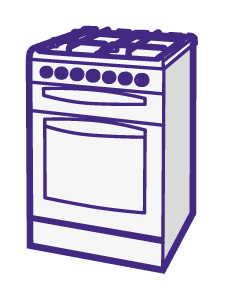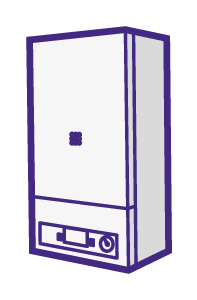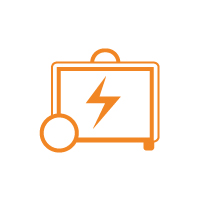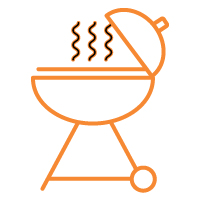What are the Symptoms of Carbon Monoxide Poisoning?
Carbon monoxide poisoning occurs when too much carbon monoxide (CO) gas is inhaled.
Carbon Monoxide is a colourless, non-irritating, tasteless and odourless gas making it very difficult to detect without the use of specialised equipment. This toxic gas is produced as a by-product when carbon based fuels such as propane, butane and charcoal are burnt. When carbon based fuels are burnt, they complete an ‘incomplete-combustion’ when there is not enough oxygen supply, meaning that by-products are produced during the heating process. Human exposure to excess CO levels (over 100 ppm) can lead to carbon monoxide poisoning.
When too much carbon monoxide gas is inhaled it starts to replace the oxygen in your blood stream which can cause potentially life-threatening complications for the body.
Common Symptoms of Carbon Monoxide Poisoning
Each of the items below are common household appliances that can, if they develop a fault, produce high levels of CO leading to potential fatal instances of carbon monoxide poisoning.

Carbon Monoxide Poisoning from Cookers
Sooty stains that appear on appliances that burn fuel like cookers can be an indicator that they are not working correctly and producing high levels of carbon monoxide.

Carbon Monoxide Poisoning from Fires
If you have a gas fire that has become difficult to light you may find that it is because fuel is not being burned correctly and too much carbon monoxide is being produced.

Carbon Monoxide Poisoning from Boilers
The flame on your boiler should always burn blue. If you notice that it is burning yellow or orange it could be a sign of poor combustion and an increase in CO levels.
Other Sources Of Carbon Monoxide
Any items that burn a carbon based fuel have the potential to produce high levels of CO increasing the risk of carbon monoxide poisoning as you can see from the examples below.

Oil and gas boilers

Portable generators

Oil or solid fuel cookers

Gas or paraffin heaters

Barbecues

Clogged chimneys

Wood or gas fireplaces

Cigarette smoke

Any fossil fuel-burning appliance
Prevent Carbon Monoxide Poisoning by fitting CO Alarms
The only way of ensuring that this silent killer is not in your home is buy fitting a CO alarm. There are many different types on the market – see our handy guide to CO alarms and their features here
